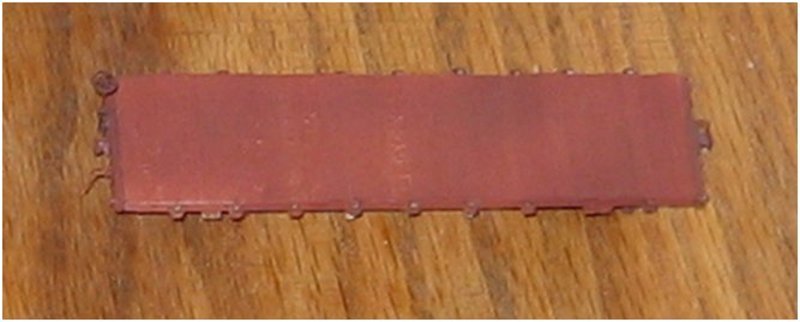There aren't too many more steps required to take a base car and make it into a flat car:
| First, add Precision Scale stake pockets to the sides of the car. If pockets are lost during the assembly and finishing
process, that's ok as flat cars did lose pockets during their operational life. I did drill out bolt holes on the pockets before
adding them. Finishing the brakes requires a brake staff to length from 0.015" piano wire. The flat car ratchet/pawl assembly
(from the brake kit) is slipped over this wire. The bottom of the wire is attached to the lower brake stave and the ratchet/pawl
is glued into position on the top of the end sill. The brake wheel center hole is cleared with a #70 bit and glued to the top
of the brake stave with CA. Lastly, the brake chain is made from 40-link to the inch chain available from A-line. |
 |
| The top and sides of each flat car are airbrushed with Polly Scale Light Freight Car Red, thinned according to bottle
directions. I wasn’t worried about keeping the paint coat even because the cars would fade in the high UV environment prevalent
in the mountains of Colorado. |
 |
| The underside of the car is airbrushed with Polly Scale Grimy Black, again thinned according to bottle directions.
When painting the ends of the truck beams, don’t be afraid of overspray, as it will help weather the otherwise pristine car sides. |
 |
| Car lettering consists of custom decals from Rail Graphics, applied according to their directions. Flat cars are series
100 cars in the B&CC. |
 |
| Remove the trucks and airbrush them with Polly Scale Weathered Black, thinned according to bottle directions. I used a 1.5
mm miniature Allen wrench as a pivot point for stacking multiple trucks and painting them all at once. The spacers were hand
painted with the same color. In the meantime, the rest of the car received an airbrushed coat of Polly Scale’s Dust,
thinned according to bottle instructions. |  |